Getting Started with Anypoint Code Builder: The Modern IDE for MuleSoft Developers

Introduction
MuleSoft, a leading integration platform, has always been at the forefront of simplifying API development and integration processes. The Anypoint Code Builder (ACB) is its next-generation Integrated Development Environment (IDE) that takes MuleSoft's development experience to a whole new level. Aimed at enhancing productivity, collaboration, and ease of use, ACB offers a modern, intuitive, and cloud- based experience for developers who are building Mule applications and APIs.
What is Anypoint Code Builder?
Anypoint Code Builder is a cloud-based development environment built for MuleSoft developers to design, test, and deploy APIs and integrations quickly. ACB is based on Visual Studio Code (VS Code), so it feels familiar to many developers who are used to working with one of the most popular IDEs in the market. It integrates tightly with MuleSoft’s Anypoint Platform, allowing you to seamlessly manage your MuleSoft projects, assets, and flows all within a single environment.
Prerequisites for Anypoint Code Builder IDE
- Anypoint Platform Account
⦁ You need an active MuleSoft Anypoint Platform account.
⦁ Sign up at Anypoint Platform if you don't have an account already.
Steps to follow:
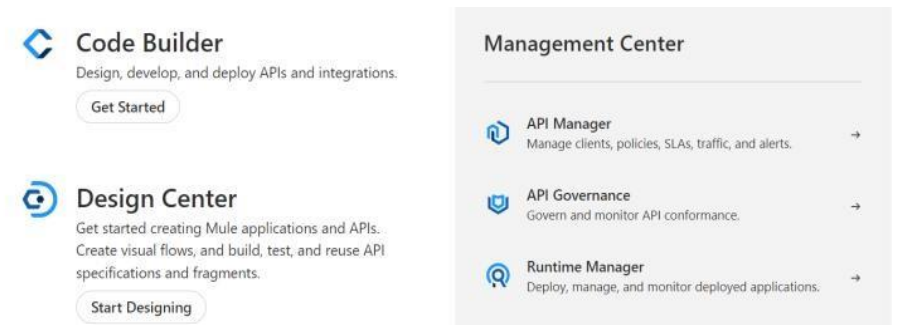
⦁ Access the Anypoint Platform, sign in, and get started with Code Builder.
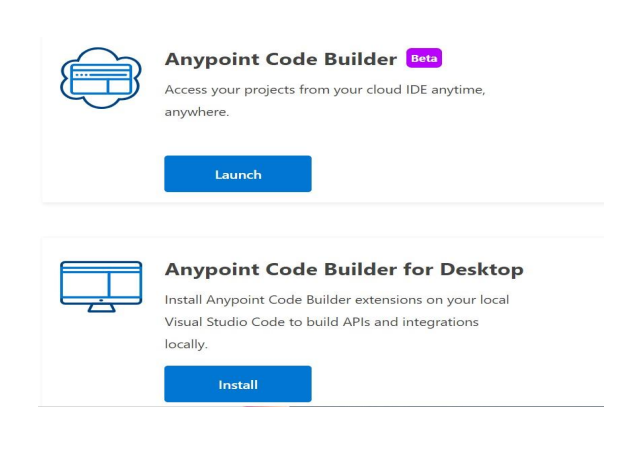
⦁ There are two ways to work with Code Builder: One is through the Anypoint Code Builder IDE, and the other is via Anypoint Code Builder for Desktop. In this blog, we will explore the Anypoint Code Builder IDE.
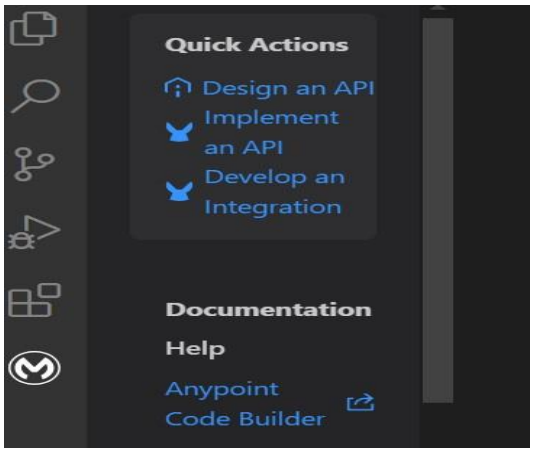
⦁ Click the Anypoint Code Builder (M) icon, then select Design an API.
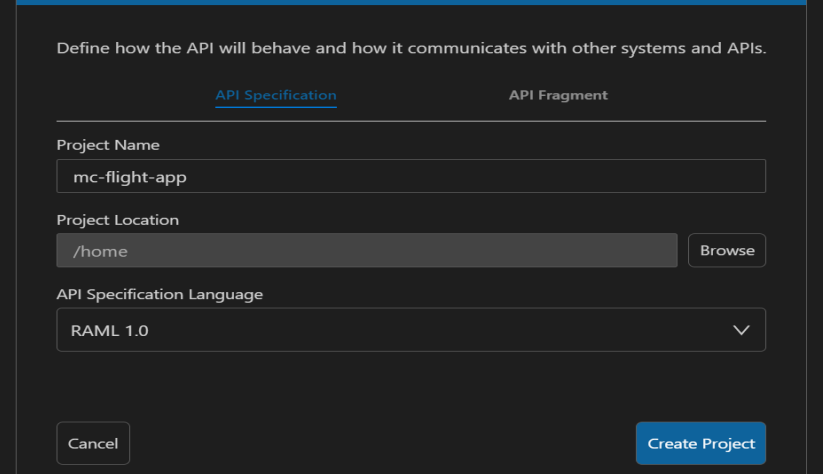
⦁ Configure the project name and location, and set the API specification language to RAML 1.0 for the initial version.
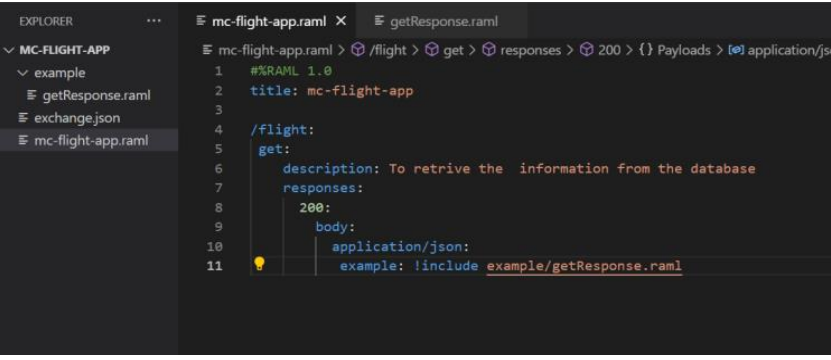
⦁ After that, it will create a folder with your project name. Inside that folder, create a root RAML file, along with other files such as datatypes, examples, etc.,
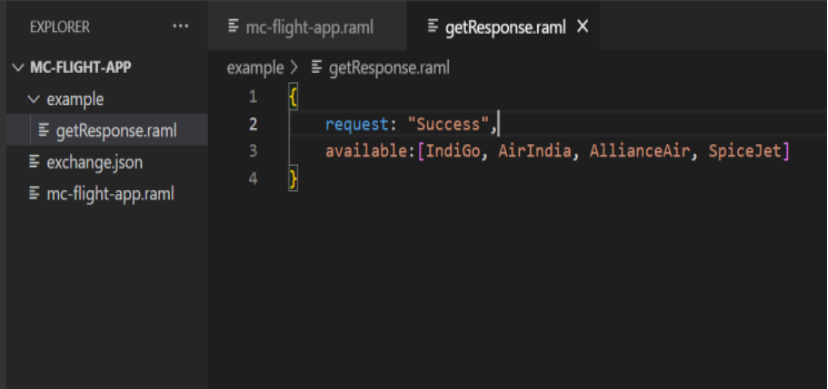
⦁ Create the RAML according to your specifications. In this blog, we created a RAML for flight availability.
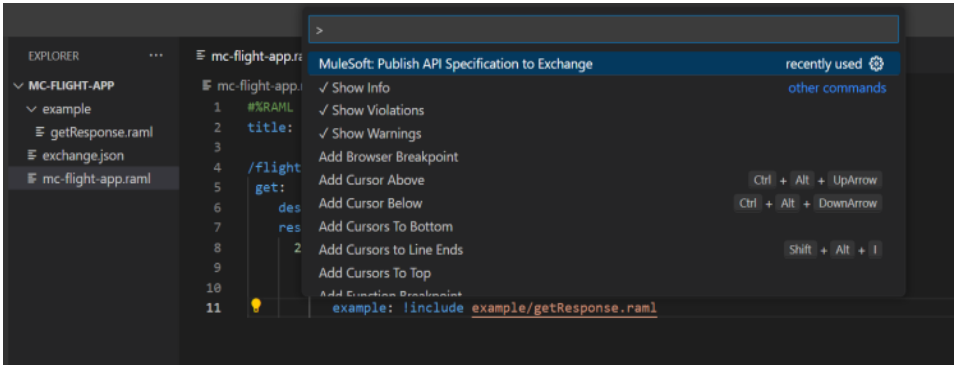
⦁ After creating your RAML, you need to publish it to Exchange. To do this, select the search option, then click 'Run and Command Mode' and type 'MuleSoft: Publish API Specification to Exchange.'
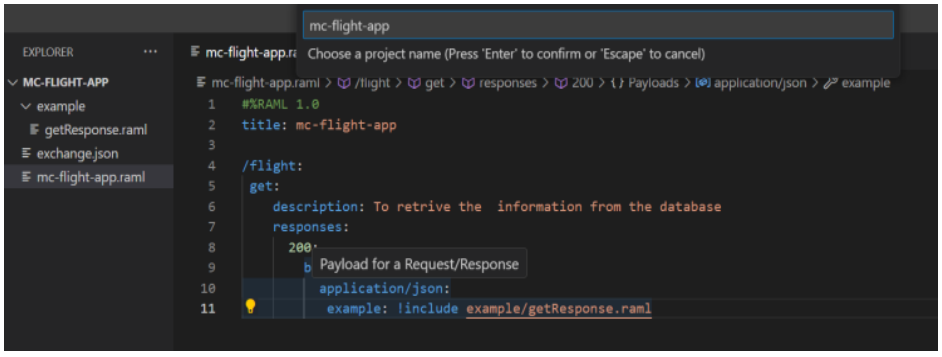
⦁ It will ask for the Business Group, Project name, version, and API version. After that you will get a message like "Published to Exchange".

⦁ Check in Exchange whether your application is deployed. Here, we have shown the result of the published API.
Key Features of Anypoint Code Builder
⦁ Intelligent Code Assistance
ACB offers smart code assistance to help developers write Mule code more
effectively. It includes features like code completion, syntax highlighting, and code suggestions tailored specifically for MuleSoft projects. This makes the development process much smoother, helping developers quickly write and edit DataWeave scripts, connectors, flows, and configurations.
⦁ Seamless Integration with Anypoint Platform
One of the significant benefits of ACB is its deep integration with the Anypoint
Platform. With direct access to Design Center, Exchange, and Runtime Manager, you can create, test, publish, and deploy MuleSoft applications without ever leaving the IDE. This integrated approach streamlines the development lifecycle, making it easier to build and deploy APIs.
⦁ Easy MuleSoft Project Management
Anypoint Code Builder simplifies the creation and management of MuleSoft
projects. It includes wizards to create new Mule applications, APIs, and connectors. Developers can use ACB to set up project structures and manage dependencies effortlessly. Additionally, built-in templates help kickstart new projects based on best practices.
⦁ Debugging and Testing Capabilities
ACB includes robust debugging and testing tools that help you find and resolve
issues quickly. The built-in debugger allows you to set breakpoints, inspect variables, and step through code, making it easier to debug complex flows and data
transformations. You can also run unit tests directly in the IDE, leveraging MUnit (MuleSoft’s testing framework) for a smooth testing experience.
⦁ Collaborative Workflows
ACB is built for collaboration. With the ability to sync directly with Git repositories and work alongside version control, teams can share code, perform code reviews, and merge changes easily. The integration with Git also means that you can manage branches, pull requests, and code history seamlessly.
⦁ Multi-Platform and Cloud-Based
As a cloud-based IDE, Anypoint Code Builder allows you to work from anywhere without having to install heavy software on your machine. Its browser-based interface ensures that you have access to your projects at all times. Furthermore, ACB supports a variety of platforms, making it versatile for developers working in different environments.
⦁ Intuitive User Interface
Anypoint Code Builder’s interface is based on VS Code, which many developers find easy to navigate. From the integrated terminal to the sidebar for managing
resources, the layout is designed to help you quickly find and access everything you need. It provides a consistent look and feel that developers who have used
traditional IDEs will appreciate.
Conclusion
Anypoint Code Builder is a modern, powerful, and cloud-based IDE tailored
specifically for MuleSoft developers. Its integration with Anypoint Platform, ease of use, and robust features make it a great tool for developing APIs and integrations quickly and efficiently. Whether you're a seasoned MuleSoft developer or new to the platform, ACB provides all the tools you need to accelerate your development process and build high-quality Mule applications.
If you haven’t tried Anypoint Code Builder yet, now is the time to dive in and explore its capabilities! Happy coding!